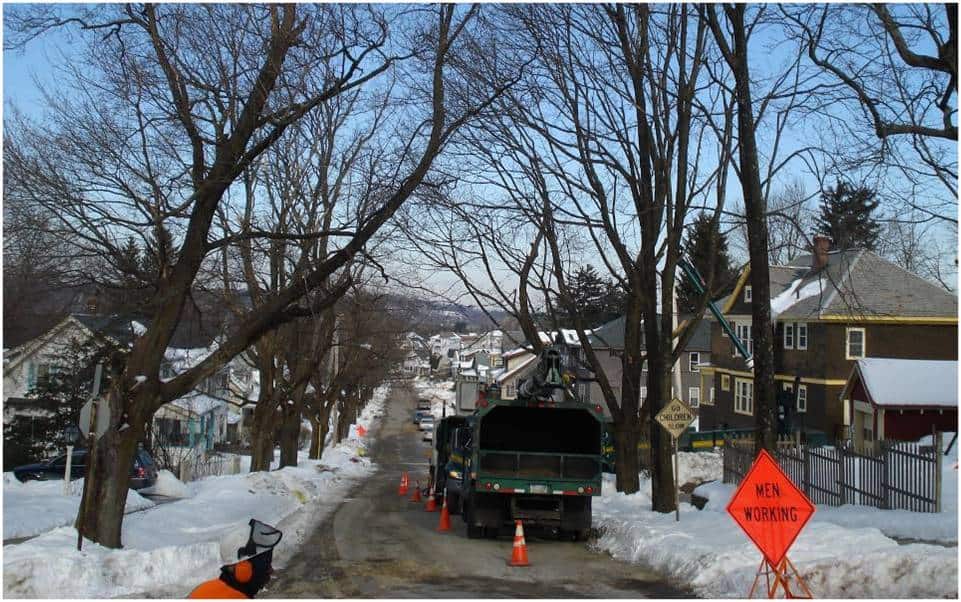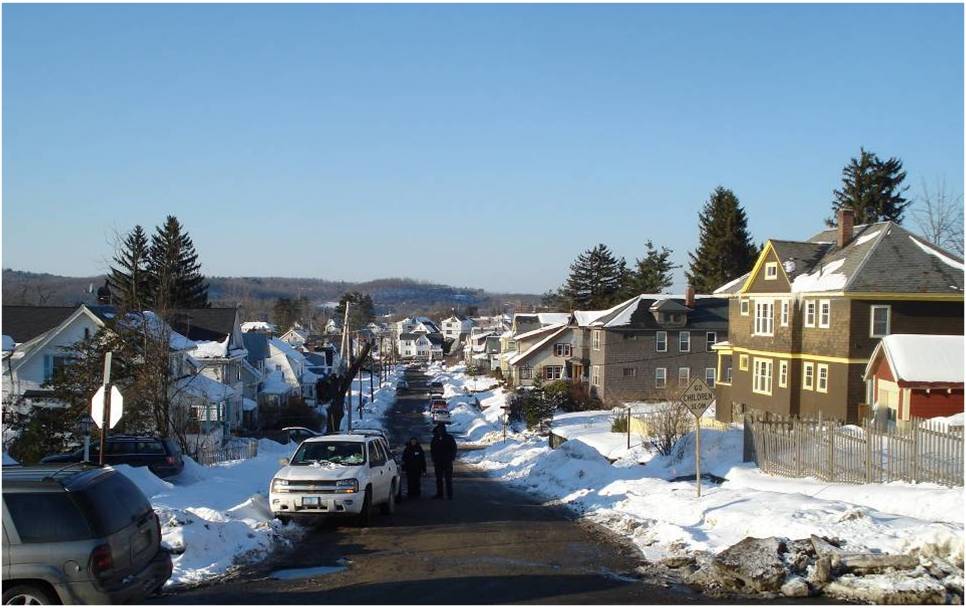
Tree Removals from ALB
Kenneth R. Law, USDA APHIS PPQ

Tree Removals from ALB
Kenneth R. Law, USDA APHIS PPQ
Good to share with your local urban tree aficionados..
Practical Advice for Using Insect-Killed Trees
Resource Guide for Forestry Professionals Developed by
U.S. Forest Service, University of Minnesota Duluth
MADISON, Wis. – Millions of dead and dying trees in the United States must be properly used or disposed of as a result of the devastating effects of invasive insects. A new publication released by the University of Minnesota Duluth and the U.S. Forest Service Forest Products Laboratory (FPL) provides urban forestry professionals guidance for managing this monumental task.
“Wood Utilization Options for Urban Trees Infested by Invasive Species” is a reference for land managers, arborists, utilization specialists, and other natural resources professionals. It provides comprehensive information on wood technology, markets, and technical information for hardwoods affected by invasive species. This free publication is available in its entirety here: http://www.fpl.fs.fed.us/documnts/pdf2012/fpl_2012_brashaw001.pdf
“This manual provides a one-stop shop for understanding how the emerald ash borer, Asian longhorned beetle, gypsy moth, and thousand cankers disease are affecting hardwoods,” explains Brian Brashaw, program director of the Wood Materials and Manufacturing program at the University of Minnesota Duluth’s Natural Resources Research Institute (NRRI). “It also offers valuable insight into the wide variety of products and markets that are available, and practical advice for considering the many options.”
The publication was designed to be a primary reference for natural resource professionals who are on the front lines in dealing with invasive species, according to Bob Ross, project leader of the Engineering Properties of Wood, Wood-based Materials and Structures research unit at FPL.
“This document is based, in large part, on FPL’s longstanding work on the basic properties of wood and wood products, and includes the most up-to-date developments on ways to mitigate the spread of invasive species in firewood,” says Ross.
Non-native invasive species are causing significant ecological and economic damage in the eastern United States. Since its discovery in 2002, the emerald ash borer alone has killed tens of millions of ash trees in 13 states, and cost municipalities, property owners, nursery operators, and forest products industries tens of millions of dollars.
The reference guide, made possible by a grant to NRRI from the U.S. Forest Service’s Wood Education and Resource Center, focuses mainly on uses for ash trees removed from urban settings. It is organized into four sections:
· An overview of the magnitude of the invasive species problem and use options for infested hardwoods. This includes information on agencies that are addressing the issue as well as a list of trade associations that specialize in manufacturing products from wood affected by invasive species.
· Information on the basic properties of hardwood species that grow in urban areas and may be affected by invasive species. Scientific and common names, physical and mechanical properties, machining characteristics, and other data are summarized.
· Market and use options for U.S. ash species, including detailed information on production considerations, quality specifications, market opportunities, and key trade associations. Uses include lumber, furniture, cabinetry, flooring, biomass, and more.
· Detailed, practical heat sterilization options for treating firewood and solid wood packaging materials made from infested wood. Heat sterilization is currently the most practical and environmentally friendly way to kill pests in solid wood and prevent their transfer to other regions.
The loss of trees due to invasive species in urban areas has been significant, bringing to light the value of often overlooked urban forest landscapes. Urban forests are dynamic ecosystems that provide clean air and water, cool cities and save energy, strengthen quality of place and local economies, improve social connections, and many other benefits.
“The invasive species issue has created an opportunity to engage the public in a discussion regarding the importance of our urban forests and the importance of using the wood generated from these forests,” says Tony Ferguson, director of Northeastern Area State and Private Forestry for the U.S. Forest Service.